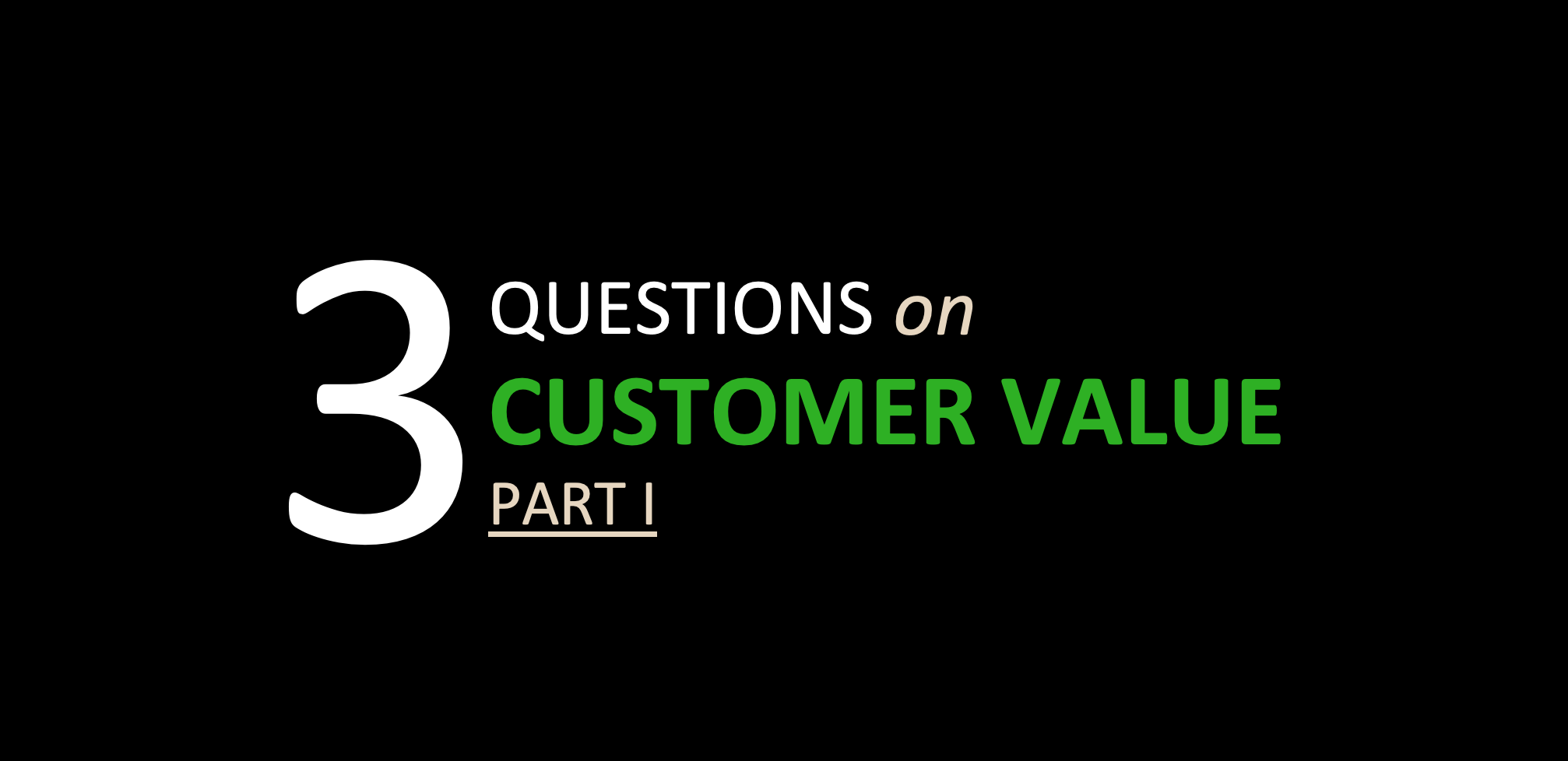When discussing about customer value with the board or management team of a B2B company, the first step is to clarify what we mean by customer value. Essentially, we want to understand what customer value is and what it means in our business.
There are several ways to define customer value. The most important in the definition is that
- Everyone in the organization understands customer value in the same way, so that we navigate on the same map. This enables for everyone to recognize their own role in creating customer value.
- We can measure the progress of customer value. Definition is useless if it does not help us measure.
- Customer value must cover both the value experienced by the customer and our ability to turn value into cash flow, profit and shareholder value. And, of course, both of these must be measured.
Customers´ Experience of Value
Customer value is the perception of value by the customer. A customer may have its own experience of using your product or service, or the customer may evaluate your business without any experience of buying or using. Experiences of the company and its offerings may or may not be true, but the customer’s image is always true to the customer. And the customer makes decisions based on their image.
Is it unfair? It may seem so, but that’s how we all are. We evaluate a company and its products and services through our own needs, images, observations, and experiences. The experience of customer value is always a feeling. Just as emotion also guides every decision the customer makes.
Our ability to turn customer experience from value to cash flow and profit
By identifying the customer value drivers, we can target investments more productively, weed out non-value-adding parts of our value chain, and price the value experienced by the customer.
By being everything to everyone, we waste resources. By doing everything like everyone else in the market, we are in constant price competition. Why would the customer pay us more or more often if we don’t differentiate ourselves from the competition in a way that is relevant to our customers?
The most productive efficiency is to lead the company’s value chain through true value by identifying what creates value for customers, in which value drivers we are relatively stronger in the market, and where we can create a sustainable competitive advantage with the smallest possible investments.
Measuring customer value
The customer value equation is formed by the value experienced by customers in the entire market and, at the other end of the equation, our ability to translate value experienced in the market into cash flow.
From the market you need to
- Know your customers’ value drivers
- Measure the importance of value drivers, i.e. weight to market customers
- Measure the market’s perception of our ability to create value, i.e. our comparative competitive advantage
Strategic and operational indicators of customer value development must be created by each company itself. However, a few metrics are suitable for every B2B company:
- CLV, customer lifetime value. There are ready-made equations for calculation, but usually they need to be tailored to suit your own business.
- The potential value of customers in relation to our invoicing. This shouldn’t be a concern solely for the sales department; the entire organization should be invested in recognizing the potential value of a customer.
- The significance of different customer segments for our business, i.e. cash flow, profitability and the development of competitive advantage. Do we already have value-based customer segmentation?
So why does everyone in the organization need to recognize their own role in creating customer value? Imagine if everyone in your organization came to work in the morning and knew how to build value for the customer in their own work. How would your company’s business be affected if everyone knows what makes the customer buy a little more, a little more often and a little better at a better price?

Create understanding of customers value drivers in your market. Tune your ability to create the value that really matters to most potential customers and measure the balance of the equition.
Want to know the 2nd important question on Customer Value? Read our post here.
